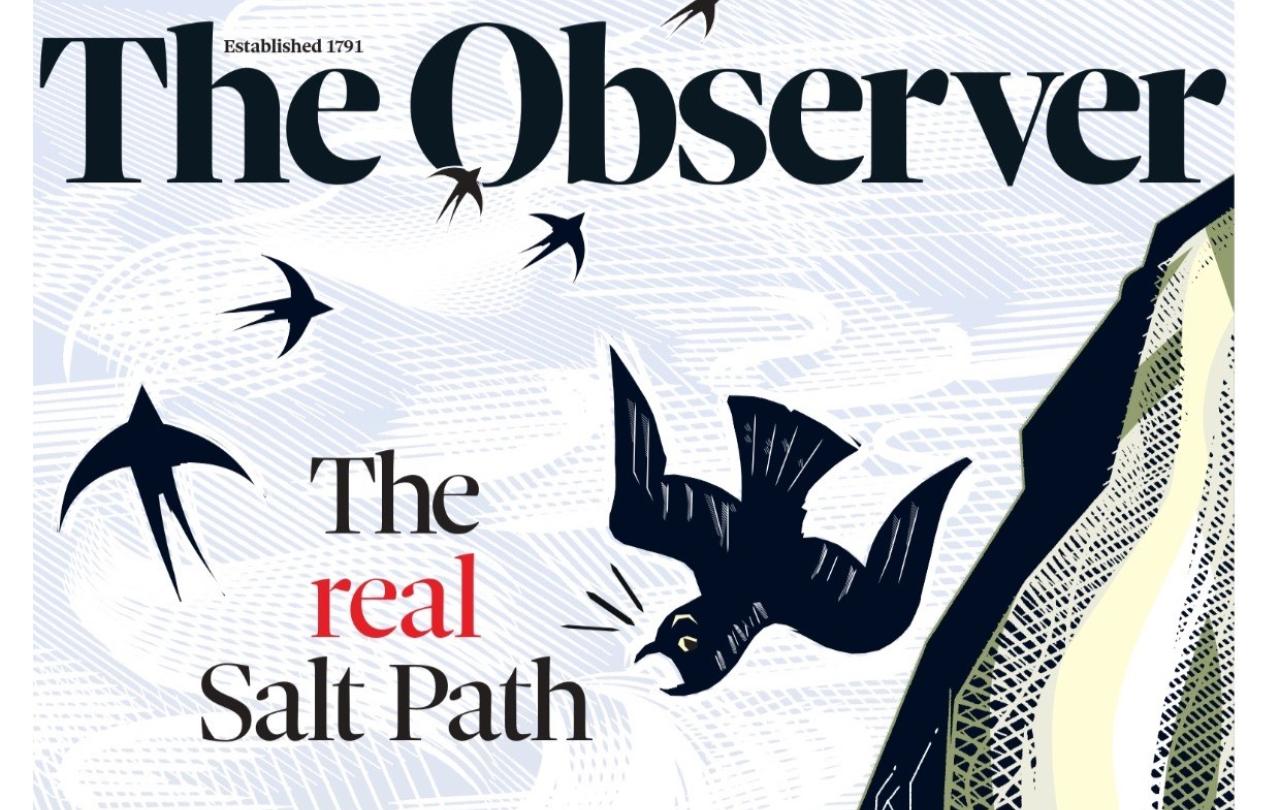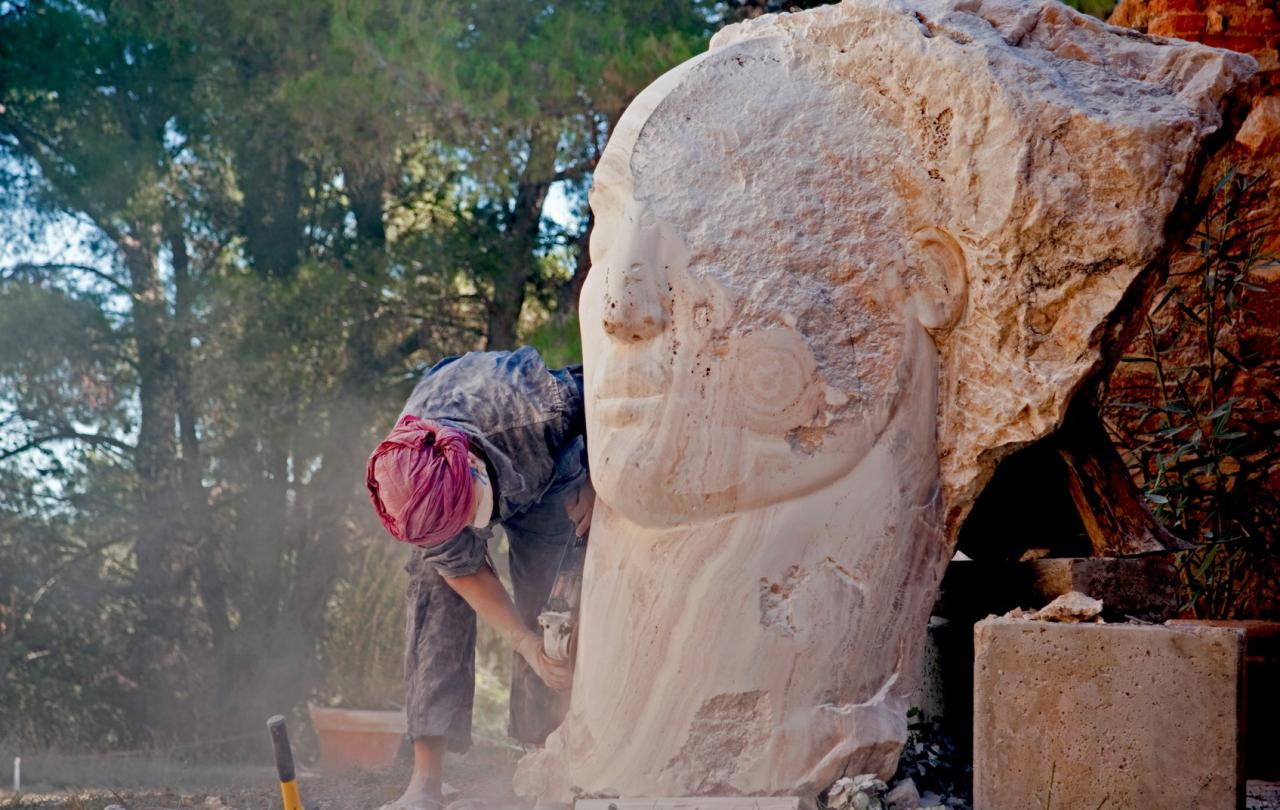
The Observer held nothing back in its exposé headline:
“The real Salt Path: how a blockbuster book and film were spun from lies, deceit and desperation”
The truth behind the summer’s feel-good movie and the reputation of author Raynor Winn lie in tatters, shredded by the revelations unearthed by relentless investigative journalism.
The uplifting story of how a couple face financial ruin, homelessness and a terminal illness by walking the South West Coast Path has been an inspiration for many who’ve either read the book or seen the film, or both. The story works because it reflects back to us the life we know, the lives we live. And when you add the seaside of Somerset, Devon, Cornwall and Dorset, what’s not to love?
But now it needs to be seen in an altogether different light.
The article beneath the headline was thoroughly researched, carefully constructed and uncompromising in the allegations implied by the discoveries, observations and commentary of its narrative.
“… not her real name”
“… she was a thief … embezzled the money”
“… arrested and interviewed by the police”
“… five county court judgements”
“… they owned land in France”
“… nine neurologists … were sceptical”
Point by point the back story of the Salt Path is pulled apart.
First, Raynor and Moth Winn are not the “real”, “legal” names of Sally and Tim Walker.
Second, The Observer uncovered that the couple had money troubles for reasons other than the failed business investment they had claimed. Rather, as a part-time bookkeeper for an estate agent and property surveyor, Sally was accused of syphoning off £64,000 from the company’s accounts. Concerning which, it was reported that she was arrested and interviewed by the police.
Third, it was mounting debts from settling the matter with her former employer, alongside other debts, that actually led to the repossession of their home and their resulting homelessness. Not the failed business venture.
Fourth, they weren’t actually homeless as they owned a property in France, near Bordeaux. While it was in a state of disrepair and not habitable, they had previously stayed on site in a caravan.
And then finally, in a revelation that undermined the very heart of the story of their journey together, medical experts observed that it was extremely doubtful that Moth had suffered from corticobasal degeneration (CBD) for 18 years. The journalist had consulted nine neurologists, and this was the reported consensus. Not only were Moth’s presenting symptoms not what were expected, the normal life expectancy with the condition was tragically short at six to eight years.
Pulling the various strands of its investigation together The Observer thumps the tub about the importance of ‘truth’. It is not acceptable to be mis-sold an idea of truth where important passages of the book are invented. There are both “… sins of omission and commission”:
“The story, no doubt, has elements of truth, but it also misrepresents who they were, how they started out on their journey and the financial circumstances that provided the backdrop.”
However, life is complicated and there are always two sides to a story.
In a response posted to her website Raynor Winn answers each of the accusations in turn. Amid the storm of vitriol and threat unleashed online by the article, she protests that, “… [it] is grotesquely unfair, highly misleading and seeks to systematically pick apart my life.”
Most distressing has been how Moth has been traumatised by the suggestion his diagnosis was made up. Along with her online statement Winn has posted appropriately redacted letters from the neurologists treating Moth that confirm his diagnosis and the narrative of the book.
As for the charges of embezzlement, she does concede that there were difficulties with a former employer. Allegations were made to the police, and she was questioned about them. However, no charges were brought, and a settlement was reached that included her paying back money on a “non-admissions basis”.
“Any mistakes I made during the years in that office, I deeply regret, and I am truly sorry.” Raynor Winn
This, however, was not the failed business deal that lay behind their financial difficulties and which triggered their homelessness and the Salt Path story.
Winn reports that the property in France is an “uninhabitable ruin in a bramble patch” with its own, unrelated, back story. When they did explore selling it at the height of their difficulties, a local French agent valued it as virtually worthless and saw marketing it as pointless.
Ultimately, they chose not to declare themselves bankrupt and simply wipe out their debts. Rather, they made an agreement with their creditors for minimal repayments. The success of the book has enabled all their debts to be cleared.
Which leaves the implicit accusation of not being who they said they were, of hiding behind pseudonyms and not owning their “real”, “legal” names. She explains that the reasons Sally Ann and Tim Walker are Raynor and Moth Winn is really quite straightforward.
In the early years of their relationship she told Moth how much she disliked being called Sally Ann and would have preferred the family name, Raynor. Moth called her Ray from that point on. Winn is her maiden name. As for Moth, well his name is Timothy, get it? Friends and family use the names interchangeably, Sal/Ray, Tim/Moth.
Having read the book and seen the film earlier this summer I was particularly taken with The Salt Path. The humanity of their story, the journey they’d been on and the insights to a life well-lived that it offered.
Goodness, which one of us has never made a mistake, a bad call, or a wrong choice, “through weakness, through ignorance or through our own deliberate fault”?
When The Observer’s bombshell broke my heart fell. Moral high horses were being mounted and outrage expressed. Raynor Winn was being cancelled, literally cancelled.
She pulled out of her forthcoming Saltlines tour, which would have seen her perform readings from her books alongside the music of the Gigspanner Big Band during a string of UK dates. There were also calls for Penguin to cancel her next book, On Winter Hill, set for publication in October.
But do you know what? On reflection, after the revelations about the Salt Path story I’m liking it even more. And for exactly the same reasons I liked it before. Because it reflects back to us the life we know, the lives we live.
For a start, life is messy. Sometimes it’s even murky, full of misunderstanding, misinterpretation and constructed narratives. Goodness, which one of us has never made a mistake, a bad call, or a wrong choice, “through weakness, through ignorance or through our own deliberate fault”? Skeletons and cupboards come to mind.
Then, on the back of that, we all fashion the story of our lives. Whether it’s curating our online presence with the images we post to social media, or the anecdotes we share and the face we present to those who are part of our day-to-day lives. The pull is always towards a version that shows us in the best light.
In fact, it can even go right down to the stories we tell about ourselves, to ourselves. The interpretation of what has happened to us and why. Interpreting how much of our experience is down to what has been done to us or is the fruit of our own responsibility.
Now, I may not want to go as far as University of Sussex Professor of Neuroscience, Anil Seth, whose books, articles and Ted Talks see us living in a kind of ‘controlled hallucination’. An interpreted version of reality constructed and calibrated by our brains out of our experience. But there is no doubt in my mind that we edit our own version of reality by the stories we tell ourselves and each other.
This is how things are. This is what it means to be human. Some bits are edited in, others edited out. Some experiences we can interpret in one way, while others might view them very differently from where they stand.
When we feel the temptation to write someone off because of what they’ve done we do well to reflect on our own experience. Then we may well be grateful that we haven’t been cancelled because of our past indiscretions. As the old saying goes, “There, but for the grace of God, go I.”
I’m reminded of how Jesus handled himself is such circumstances. When a self-righteous crowd were swiftly wanting to rush to judgement on a woman’s flawed sexual choices, Jesus encouraged those who were without fault to be the first to act. Slowly they all realised what he was saying and backeddown.
For myself, I have always found the prayer of confession to be profoundly helpful. It keeps us grounded in the reality of our own experience and should caution us about cancelling others and writing them off.
Almighty God, our heavenly Father,
we have sinned against you
and against our neighbour
in thought and word and deed,
through negligence, through weakness,
through our own deliberate fault.
We are truly sorry
and repent of all our sins.
For the sake of your Son Jesus Christ,
who died for us,
forgive us all that is past
and grant that we may serve you in newness of life
to the glory of your name.
Amen.
For our skeletons there is forgiveness.
For what lies ahead, we have the possibilities of starting over.
Support Seen & Unseen
Since Spring 2023, our readers have enjoyed over 1,500 articles. All for free.
This is made possible through the generosity of our amazing community of supporters.
If you enjoy Seen & Unseen, would you consider making a gift towards our work?
Do so by joining Behind The Seen. Alongside other benefits, you’ll receive an extra fortnightly email from me sharing my reading and reflections on the ideas that are shaping our times.
Graham Tomlin
Editor-in-Chief





